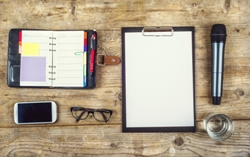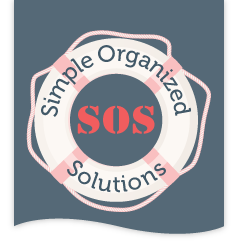 Planning is typically a hot topic at the beginning of the new year. Some make New Year’s resolutions on a whim, perhaps at a party. Others create goals and make a plan to accomplish those goals. Another scenario is to tweak an existing plan that may not be working so well.
Planning is typically a hot topic at the beginning of the new year. Some make New Year’s resolutions on a whim, perhaps at a party. Others create goals and make a plan to accomplish those goals. Another scenario is to tweak an existing plan that may not be working so well.
Part of the planning process should include scheduling tasks associated with your goals. Having a plan is great, but if you don’t actually schedule the time to complete the tasks, those tasks may just fall by the wayside, and you may end up not meeting your goals.
Things can also pop up to distract us from our plans. Things like, unexpected traffic, an ordered item didn’t arrive on time, or maybe the dog jumped the fence and you have to go find him. These are all things that can quickly derail even the best laid plans. To keep our plan on track, we need to factor in time so we have a level of flexibility in the schedule.
Estimating how long a task will take to complete is not always easy. If you’ve performed the task in the past, maybe it’s a routine task, and remember how long it actually took, that’s great, use that time measurement. If it’s something you haven’t done before, you may have to do some investigating to get an accurate measurement of time. Ask someone you know that’s performed this particular task to see how long it took them. Then adjust the time based on your personal work style. What I mean by that is, everyone is different. Some do things at a faster pace than others. Others may be more detail oriented and take more time to complete the same task. An option for routine tasks, such as organizing or cleaning, is to perform the task and set a timer to see how long it takes. Keep a log for a few days and average the time to get an accurate measurement.
Now that you have your goals set, and an idea of time measurements for your tasks, it’s time to create a schedule. There are many options to create a schedule. It can be as simple as a handwritten list, a paper planner, or as elaborate as using project planning software. Determine what works best for your personal work style.
Whether you use paper or a software application, you need to keep your schedule close and review it frequently. Using an electronic device such as your phone or iPad, has the benefit of an audible alarm to remind you when a task is scheduled. Keeping your focus on your schedule, will allow you to complete your tasks on time, and consequently accomplish goals.
What do you use to schedule your tasks?


